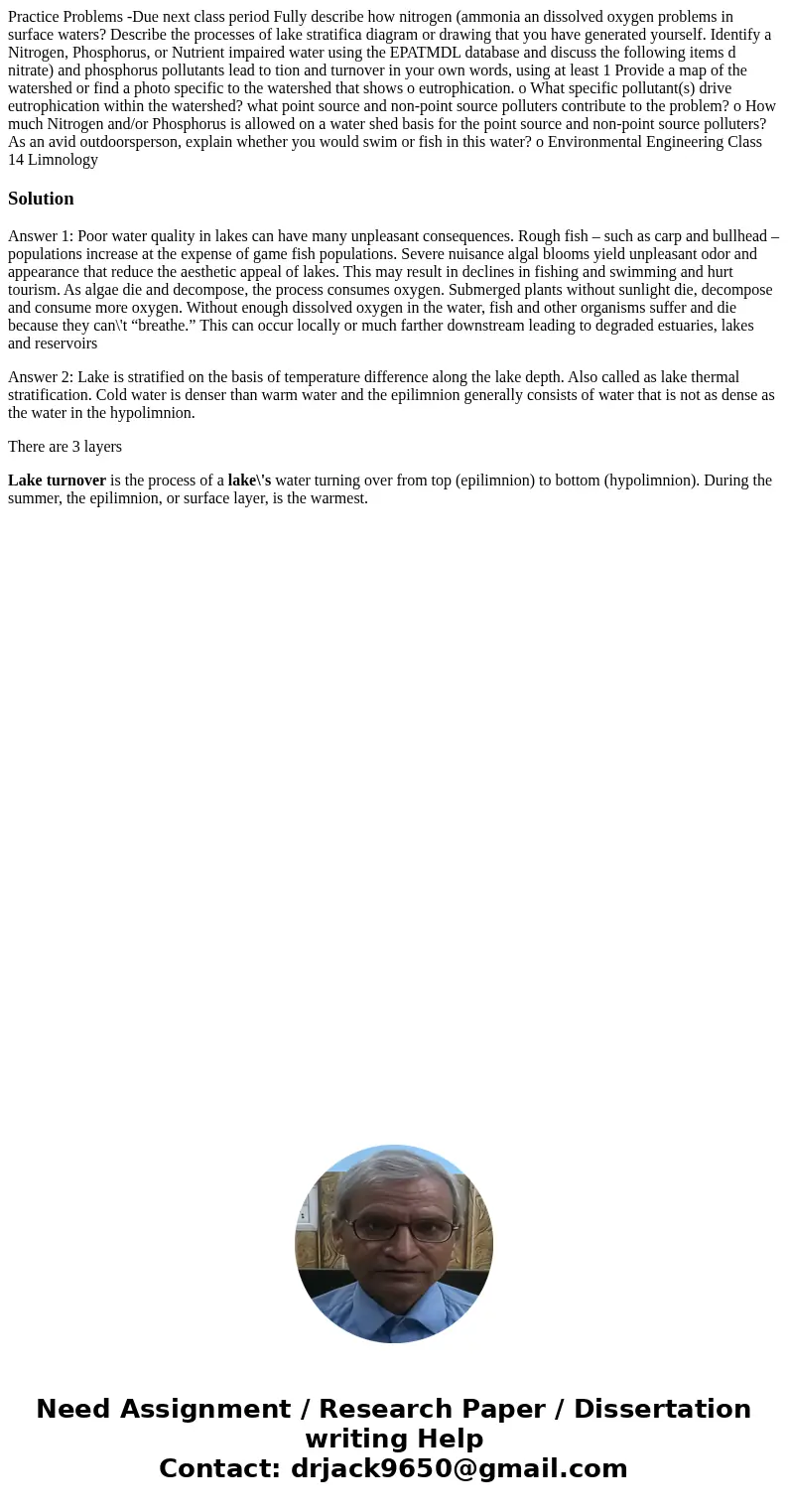Practice Problems Due next class period Fully describe how n
Solution
Answer 1: Poor water quality in lakes can have many unpleasant consequences. Rough fish – such as carp and bullhead – populations increase at the expense of game fish populations. Severe nuisance algal blooms yield unpleasant odor and appearance that reduce the aesthetic appeal of lakes. This may result in declines in fishing and swimming and hurt tourism. As algae die and decompose, the process consumes oxygen. Submerged plants without sunlight die, decompose and consume more oxygen. Without enough dissolved oxygen in the water, fish and other organisms suffer and die because they can\'t “breathe.” This can occur locally or much farther downstream leading to degraded estuaries, lakes and reservoirs
Answer 2: Lake is stratified on the basis of temperature difference along the lake depth. Also called as lake thermal stratification. Cold water is denser than warm water and the epilimnion generally consists of water that is not as dense as the water in the hypolimnion.
There are 3 layers
Lake turnover is the process of a lake\'s water turning over from top (epilimnion) to bottom (hypolimnion). During the summer, the epilimnion, or surface layer, is the warmest.

 Homework Sourse
Homework Sourse